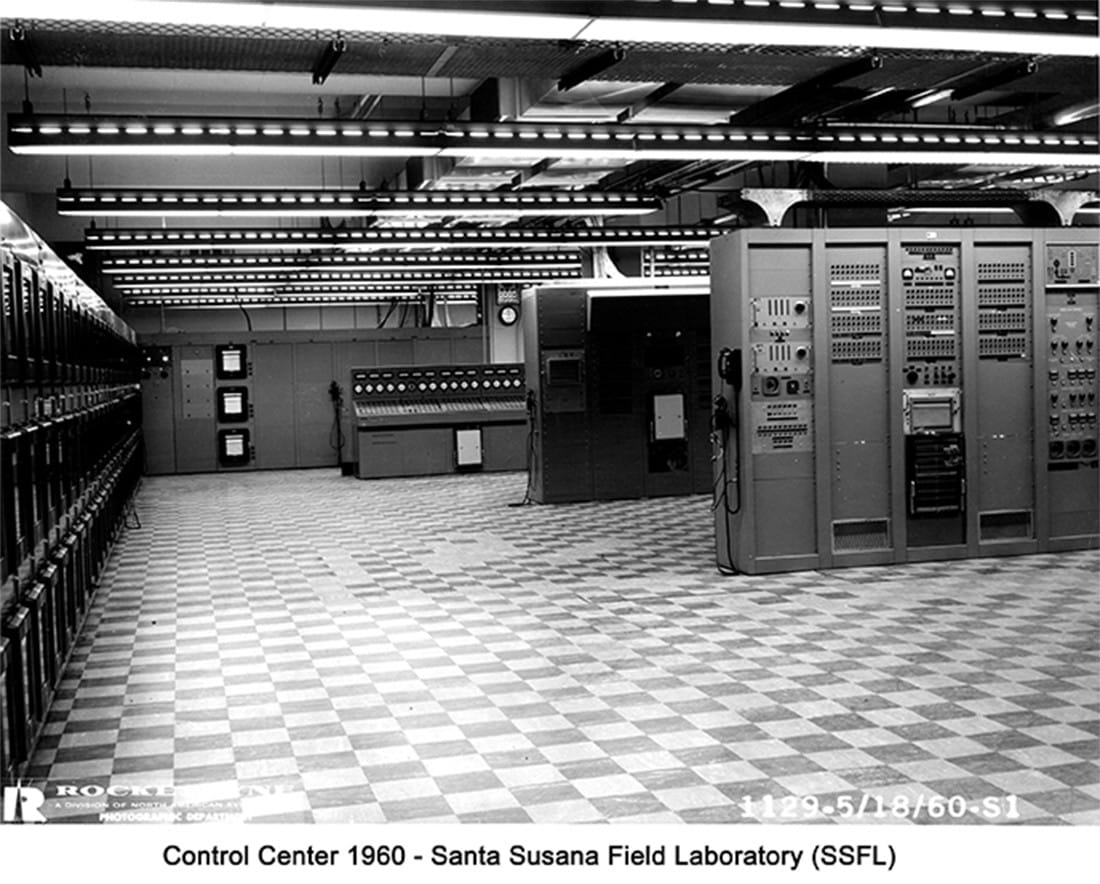
Between 1954 and 1957, NAA built the Alfa, Bravo, Coca, and Delta test stands in Area II, under contract with the USAF. The test stand activation summary summarizes the year of activation and initial program for each of the large test stands.
The Area II major rocket engine programs table lists the major rocket engine programs under which Rockwell tested engines in Area II and their approximate duration. The summary includes programs performed for the U.S. Department of Defense (DoD) and NASA. The liquid-fuel rocket engines used in these programs burned a variety of fuels. Kerosene-burning engines required trichloroethylene (TCE) flushing to remove the residual hydrocarbons that were combustible and potentially explosive when exposed to LOX.
Rocketdyne developed a level of cleanliness for engine parts, a “LOX clean standard”, used at SSFL. This practice included procedures and requirements for hot-fire testing and decontamination of engine or component assemblies, including the TCE flushing procedures.
The total amount of TCE used per engine test varied between 36 to 108 gallons at the four test areas, according to the engines being tested.
A TCE recycling system was implemented at SSFL in 1961. After being flushed through the engines, TCE was then captured in a catch pan and contained in a storage tank until it was removed off site for recycling. The Engine Testing Procedure describes the TCE flushing process.
Use of the Delta area ceased in the mid-1970s. Engine and component testing continued past 1983 in the Alfa, Bravo, and Coca areas. TCE use was discontinued in 1994 at the Alfa and Bravo areas. TCE use at Coca was discontinued when those test stands were deactivated in 1988.
The Liquid Oxygen (LOX) Plant was located in the NASA portion of Area I. LOX was produced using a cryogenic process that liquefies air and the oxygen is separated from the nitrogen. The LOX Plant buildings and tanks were removed in the early 1970s. Asbestos and soil were removed from a 54,000 square foot area off the hillside near the LOX Plant in the late 1980s. Several drums were also removed at this time. A former waste oil sump, clarifier, and leach pit were excavated and removed in 1993. Additional asbestos removals were conducted in 1990 and 2007. The LOX Plant concrete foundations were removed in 1996. The area was graded after the foundations and aboveground concrete supports were removed in 1996, and the site has been re-graded to conform to natural topography.
The truck scale was refurbished in 1992. The truck scale and affiliated controls building are the only remaining structures at the LOX Plant.